Director/Screenwriter David Lynch Reveals “New/Old Clue” to Black Dahlia Investigation in “Dinner with John John”
April 12, 2019
Los Angeles
DINNER WITH JOHN JOHN
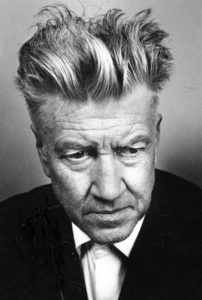
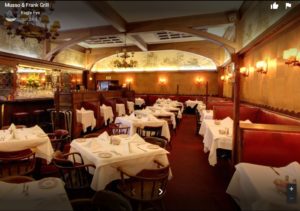
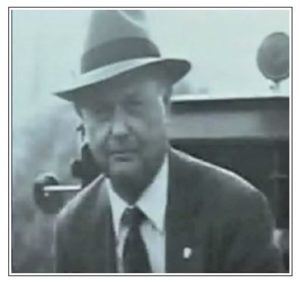
David Lynch Dinner at Musso & Frank Grill LAPD Detective John St. John
In film director David Lynch’s new book, Room to Dream (Random House 2018) he presents us with a never before revealed anecdote that directly relates to the Black Dahlia Murder investigation. Here it is in his own words from Room to Dream, pages 353-354:
(The reference to this dinner meeting can also be found repeated in an article in the Hollywood Reporter published on 2/22/19. Here is the link to that article.)
(SKH Note- David Lynch’s reference here to meeting and having dinner with LAPD Detective John St. John must have occurred sometime in the 1970s or 1980s. To my knowledge, St. John and his partner Det. Kirk Mellecker (who I trained in Hollywood Division in the early Seventies) did not receive the case until then. It was handed down through the years from Harry Hansen, to Pierce Brooks, to Danny Galindo, and eventually to John St. John and Kirk Mellecker. I documented my lengthy interview with Detective Mellecker in BDA and he indicated he and John St. John tried to “look at the case in 1976 and 1977 and then we got hit with the Hillside Strangler and everything after that until the late eighties.” )
As a rule, I give scant credence to these decades-old, “Did you know this about the Black Dahlia Murder” stories.
Mostly, they are made from whole cloth, pure fabrications and are nothing more than, “he said this, she said that” myths with no real substance.
But, in Mr. Lynch’s case, I will admit to making an exception. I believe his anecdote is TRUE and ACCURATE.
Why?
Some years back I reenacted the drive from our Sowden/Franklin House to the crime scene in an attempt to determine the exact distance and drive time.
I chose January 16th (the day after Short’s body was found) so as to also establish the ambient lighting as it would have been in 1947. I began my drive from the rear alley behind our home on Franklin Avenue, at 6 a.m. in darkness. I drove due south on Normandie then west on what was then “Santa Barbara” (now Martin Luther King Ave) then north on Degnan Ave (which becomes Norton Ave) to the crime scene, stopping at 3815 S. Norton Ave. The drive took me 25 minutes and upon my arrival, it was still dark outside.
Based on witnesses’ statements of his seeing a man in a dark sedan at the location standing by his car for about four minutes I waited the same time and then drove north, heading back to the Franklin residence.
As I drove from the scene, it was still dark outside, but daylight broke within five to ten minutes of my departure from the scene and it was full daylight upon my arrival back at the residence.
A Trophy to Memorialize his “Masterpiece”
” Then he turns away and goes to his briefcase, pops it open, and takes out a beautiful, glossy black-and-white photo that he lays on the table in front of me. It’s a picture of the Black Dahlia lying in the grass, and it’s in mint condition.
…then suddenly I knew what it was. That picture was taken at night with a flash, and that opens up a whole realm of possibilities regarding that case.”
David Lynch, Room to Dream page 354
It makes total sense to me that my father would photograph his masterpiece. How could he not? The perfect Surrealist artwork –his Murder as a Fine Art had to be memorialized. To be expected.
But, the larger question is- How and when and where did LAPD come into possession of this photograph?
As I see it, there can be only one answer. An answer as dark and macabre as the crime itself.
Like his other letters and taunts following the crime, GEORGE HODEL MAILED THE PHOTO TO THE POLICE.
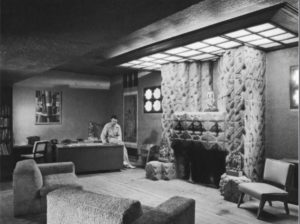
George Hodel at Sowden/Franklin House 1950
UPDATE April 18, 2019
SKH Note- George Hodel fancied himself a skilled artist/photographer and in his teens in the 1920s took numerous art photos in and around Los Angeles. He even had a “one-man-show” in Pasadena circa 1924. (I will be displaying more than a dozen of these photographs in the future publication of “The Early Years.” Here is a sample of some self-portraits he took from that time period. along with their handwritten titles in as we can see GHH’s familiar block letters.
Because of his love of photography, George had his own DARKROOM at the Sowden House where he developed and processed all of his own photographs.
From this new information to my mind, it is highly likely that after taking his “night photo of Elizabeth Short” at the crime scene, (a trophy to immortalize his “masterpiece”) he returned home and processed and mailed a print directly to the press and police. This would be something that LAPD would keep secret and likely insist if the press had a copy that they NOT REVEAL IT.
Incredibly, this act would remain secret for seventy-two years and not be revealed until David Lynch’s public disclosure in his book and magazine article.
Below is a 1969 diagram of the interior of the Sowden/Hodel residence showing the location of George Hodel’s “DARKROOM.”
The word “darkroom” can be seen as a typed inclusion on the original survey diagram.
This is unchanged from the 1940s and would remain as a darkroom until the remodel circa 2003 by the new owner, Xorin Balbes.

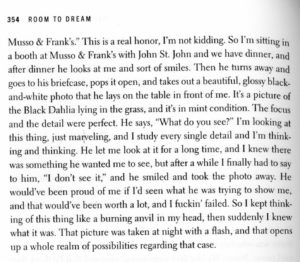
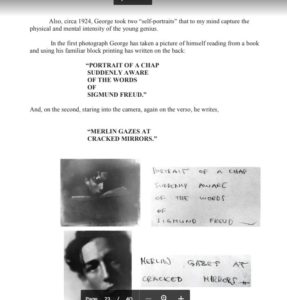
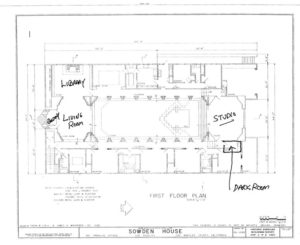
Steve: Believe this meeting would probably have been in the mid-nineties, shortly after St. John’s retirement from the LAPD and in the run up to Lynch’s LOST HIGHWAY (released in 1997). There’s a brief, almost subliminal shot in LOST HIGHWAY which references the Black Dahlia murder. Lynch also made a 52-second short in 1995, PREMONITIONS FOLLOWING AN EVIL DEED, that’s clearly inspired by the case. Anyway, this definitely falls in the “Big If True” category. -LW
LW: Actually, St John and I knew each other at least on site so to speak. Kept coming to each others crimes scenes through the decades. I know he respected me and my work. He knew Hollywood Homicide kicked ass on solving cases back in the Seventies and Eighties and respected us for that.
Sadly, in the final years Devil Rum finally caught up with him and he really just kind of rode on his legend, which was fine. He died in 1995, and the LA Times in his obit claims he started working the Black Dahlia case a year after the murder in ’48. I don’t believe that’s true. I’ve never seen his name ever mentioned until the Seventies as connected to the case. ??? https://www.latimes.com/archives/la-xpm-1995-05-04-mn-62350-story.html
He may well have retired and kept a copy of the “night photo” in his personal possession. (Hell, everybody else kept stuff.)
I wonder if that photo shows the wrist watch in any detail?
Brian CW: Kind of doubt we will ever see that photo. Wish we could.
Steve, thanks for your hard work and dedication on this harrowing case. You have everything you need for it to be solved. Let’s hope those who can close this case come to the party. Throwing David Lynch in the mix makes an already incredible story truly fascinating.
Rachel M: Thanks Rachel. Much appreciated. Yes, if you were going to cast someone for that part to meet and greet the LAPD Homicide detective at Musso’s can’t think of a more appropriate man for the job than LYNCH.
Steve:
Lynch was himself inspired by Man Ray. See his 1987 documentary for BBC Arena, which opens with RUTH, ROSES AND REVOLVERS::
http://www.faena.com/aleph/articles/david-lynch-presents-the-history-of-surrealist-cinema
Another influence on Lynch was Maya Deren’s MESHES OF THE AFTERNOON (1943), a dream-like experimental short with a noirish feel. There are things in that movie which remind me of L’EQUIVOQUE (1943), but it’s probably coincidence. As far as I can tell there was never any contact between Deren and Man Ray in Hollywood.
-LW
Even as the years have rolled by, that old saying still applies: “The plot thickens.” I am so happy that the current interest in the case due to the “truthful” portrayal of the Dahila case in the recently completed “Pod Casts” keeps paying dividends. It makes perfect sense, with George Hodel’s sick, demented pathology that he would want this picture as a memento of his opus art work. More great work on your part to point this out to your readers.
Taken by the Hodel family photographer? Seems eerily fitting.
Dear Mr. Hodel
Thanks for this article, I will share it soon on Lynchland at fb.com/lynchland. I am a french specialist of David Lynch’s works and, based on the Hollywood Reporter’s article you mention (I have begun to read “Room to Dream” but I’m a slow reader !), I have posted this article a few weeks ago, with pictures referencing David Lynch’s “obsession” with the Dahlia case :
https://www.facebook.com/Lynchland/photos/a.2166134916786057/2176572535742295
Have a nice Sunday
Roland K. / Lynchland
Steve, forgive me if you already mentioned this in one of the books–I have always wondered why GHH chose Elizabeth Short (instead of another woman) for the homage to his friends’ art. I just assumed he was particularly enraged at her for her researches in Chicago and for that reason degraded her. But the proof of GHH’s artistic point-of-view in this post made me think that he chose her because she had modeled for the artists. That is, they had made drawings OF her; he made drawings ON her. For the artists, she was the model for their canvasses. For GHH, she was the canvas. And now they could never use her again. The circle was permanently closed. One-up indeed!
Dani: Well, hard to say but from what we know it would appear that her most immediate threat to GHH was her active investigation of the Lipstick Murders in Chicago in June, 1946 while he was away working for UNRRA in China. If I am correct that she posed for Man Ray for L’Equivoque back in ’43 then there certainly would have been a “history” with George and Man Ray off and on for four years including the time GHH was investigated by LAPD for the murder of his secretary, Ruth Spaulding in ’45. But, I think it best to go for the most obvious, which appears that she could or would reveal her knowledge of his connections to the Degnan murder.
Hi Steve: Certainly that makes sense as GHH’s motivation for murdering her, but why choose HER over other women for the homage? GHH could have chosen ANY woman.
Hi Steve,
George Hodel appears not to have had any concern that either Man Ray or others in his circle of friends, upon hearing news reports, would recognize the allusion to Ray’s art, develop suspicions that their friend Hodel the surgeon and admirer of Ray’s work of being the killer, and share their suspicions with the police. How could he have been so confident of their silence?
Thanks, Michael Wilson
I don’t see why LAPD would keep the photo a secret.
Cecilia B:
I do. It is common practice for Law Enforcement to hold back certain information/facts from the public to use a “polygraph keys”. Information that only they and the actual suspect would know. The fact that the killer not only took his “souvenir photograph”, at nighttime, and then sent a copy to the police and or press would be something only HE and the POLICE would know. Critical to keep that SECRET.
Hi Steve – Just a thought – could this possibly be the picture GHH said he “thought he had gotten rid of” on the wiretap tapes?
Janet M: Hi Janet. No, that related to a picture of “that girl, I thought I’d gotten rid of it.” “That girl” was either Elizabeth Short photo or more likely in my mind, Mady Comfort, which we know they had with him together nude and they showed to my mother in the Lt. Jemison interview. If it had been the “night photo of the crime scene body” he wouldn’t have made that statement because he was the one that would have had to send it to them. Steve
Hi Steve,
While I visit do visit your blog frequently, I’ve never posted a comment. What an amazing discovery.
A few thoughts.
I am astounded that this photo was not kept in the file. Corruption knows no bounds! My thought is John St. John either sold it for megabucks to someone who collects this type of stuff or passed it down to his family. Lynch described it as being in mint condition. No way was it destroyed. Another question is what happened to the negative? Would George really have been able to destroy his “masterpiece”? What a find THAT would be, right?
One of the most compelling pieces of evidence for me is George’s deep affinity to surrealism and his relationship with Man Ray. Of course, the body of evidence you’ve collected over the years greatly supports the claim, but frankly, the surrealist connection pretty much hit it out of the ballpark for me. It is a very particular aesthetic on display in the murder scene and very rare that someone so distant from the movement would have done what was done to Elizabeth. The aesthetic is far too particular to ignore and it would be rare, if not impossible, to find another surgeon with such a strong attachment to the aesthetic/movement as George was. I also have no doubt that Duchamp saw the image of Elizabeth. The question is, which photograph did he see?
While I appreciate (as an artist) that works of art are inspired by cultural events, it really disturbs me that in the end, George’s “masterpiece” was iconized in Duchamp’s “Étant donnés”. I am sure he would have seen it at some point even if only in a photograph. I also find it hard to believe that Man Ray didn’t suspect George of the murder. One has to wonder why they stopped communicating after the 50s. One of many questions and mysteries that shall never be answered.
I’m a bit behind in my reading (still have Most Evil II and Black Dahlia Avenger III to read). I’m looking forward to them both.
Lissa: Yes, agreed. The “Murder is a Fine Art” crime signature is pretty unique to George Hodel and certainly would not fit or be understood by any of the other “Dahlia suspects” that have been present through the decades. Also, as you will discover in reading the new books, there is much more surrealist linkage to Man Ray especially with his acknowledgment back to GHH in his 1969 Minotaur Poster. That poster was a huge discovery not only linking us back to the original “L’Equivoque/Elizabeth Short 1943 model, but to taking her and posing her as GHH’s minotaur at the crime scene.
And, yes the “night photo” in retrospect makes perfect sense. I’m surprised I did not suspect it from the getgo. He would have absolutely wanted a “trophy” to document his “masterpiece” and a NOIR one to boot. Best, Steve
Is it possible that June has old negatives of your Fathers? Sometimes those get packed in a box and forgotten….If that negative were to turn up how explosive would that be?
Michelle de G: Possible, but zero chance she would share any photographs or any info/evidence that would help connect him to any crimes(s). I have had no contact with June since informing her of the impending publication of BDA back in 2003. Best, Steve
It makes sense she would not want to in any way acknowledge the possibility of what your dad did. But finding the negative of that photo would make a fascinating discovery.
Steve:
What are your thoughts regarding the claims that
“someone” legally or otherwise, owns or has in their possession, the LAPD crime scene photos from 1925 to 1975? Apparently this is known information. How is that possible? And, is it possible contained in those photographs potential ‘never before seen’ (to the public) pictures of the Elizabeth Short crime scene? How is this possible?
Thank you.
JV
JV:
Last August (2019) I attended and spoke at an art exhibit in DTLA at an art gallery. The show was a display of LAPD crime scene photographs on display by Fototeka which is likely the collection of which you refer.
Most/all of these photographs were saved from destruction by photographer, Merrick Morton, with the Department’s full permission. See the related links below.
As far as the reference to a “night shot” of the Black Dahlia crime scene, the first and only reference to its existence, to my knowledge, is the David Lynch article and his reference to “Det. John St John showing it to him at Musso’s.” I am not surprised that such a photo exists and has never been seen. By example, LAPD maintained “there were no burn marks to Elizabeth Short’s body” for some fifty-five years. Then, when BDA I was published in 2003, I was contacted by Judy May, the granddaughter of one of the two lead detectives, Harry Hansen. She provided me with an assortment of photographs that her grandfather had kept at home, from the original investigation which included a photograph of the nine cigarette or cigar burn marks on the victim’s back, never seen or shown to the public. This photo first published and seen by the public in my updated BDA paperback edition in 2004. So, yes, very possible that the “night photo” and or other photographs exist but have never been seen. In fact, we know to a certainty that some do exist as it is documented that “color photographs” were taken at the autopsy, which have never been seen.
https://petapixel.com/2019/07/09/lapd-crime-scene-photos-from-the-mid-1900s/
https://www.theeastsiderla.com/sponsored_posts/conversation-and-q-a-with-author-steve-hodel/article_ad133846-c83a-11e9-873a-aba098ff5258.html
So I was just listening to the audio version of the David Lynch book and he gives a slightly different account than the book (he isn’t just reading his own writing out loud, he’s giving his own recollection on the spot so it differs from the book slightly). In the audiobook he adds the detail that John St John said he was given this photo by a woman who’s husband was a photographer. After the husband died she came across it when she was going through his boxes and boxes of photos, found that photo, called St John and said she thought he should have it.
JR:
Interesting additional comments. Will see if I can follow-up on that. Thanks for the information.
Did you find anything else re the audio version of Lynch’s book? Thanks!
Haven’t listened to it yet, but will try and get to it. steve